#SustainableAgriculture
Text
Blockchain in Agriculture and Food Supply Chain Market Forecast Suggests Sustained Growth Throughout the Forecast until 2029

The blockchain in Agriculture and food supply chain market is expected to grow at a CAGR of 43.76% from 2023 to 2029. This growth is being driven by a number of factors, including the increasing demand for food safety and traceability, the growing popularity of smart contracts, and the increasing adoption of blockchain by governments and businesses.
Blockchain is a distributed ledger technology that can be used to record transactions in a secure and transparent way. This makes it ideal for tracking food products from farm to fork, as it can help to ensure that they are safe and have been produced sustainably.
Smart contracts are self-executing contracts that are stored on the blockchain. These contracts can be used to automate payments and transactions in the food supply chain, which can help to reduce costs and improve efficiency.
Governments and businesses are increasingly recognizing the potential benefits of blockchain, and are starting to adopt it in their supply chains. For example, the United States Department of Agriculture (USDA) is currently working on a blockchain pilot program to track the movement of food through the supply chain.
The growth of the blockchain in agriculture and food supply chain market is expected to create new opportunities for businesses. These businesses will need to develop blockchain-based solutions that can help to improve food safety, traceability, and efficiency.
The following are some of the benefits of using blockchain in the agriculture and food supply chain:
Improved food safety: Blockchain can help to track food from farm to fork, which can help to ensure that it is safe and has been produced sustainably. This is because blockchain is a tamper-proof ledger that records all transactions in chronological order. This makes it very difficult to counterfeit or adulterate food products.
Increased traceability: Blockchain can help to track the movement of food through the supply chain, which can help to improve traceability. This is important for both consumers and businesses, as it allows them to know exactly where their food comes from.
Reduced costs: Blockchain can help to reduce costs in the food supply chain by automating payments and transactions. This is because smart contracts can be used to automate these processes, which can save time and money.
Improved efficiency: Blockchain can help to improve efficiency in the food supply chain by streamlining processes and reducing paperwork. This can help to speed up the movement of food through the supply chain, which can lead to increased profits.
Overall, the blockchain in agriculture and food supply chain market is a promising market with a lot of potential. As the market matures, we can expect to see even more innovative applications of blockchain in this sector.
Here are some of the challenges that the blockchain in agriculture and food supply chain market faces:
The lack of standardization: There is currently no single standard for blockchain in the agriculture and food supply chain market. This can make it difficult for businesses to adopt blockchain and for different systems to interoperate.
The lack of trust: Some businesses and consumers may be hesitant to adopt blockchain because they do not trust the technology. This is because blockchain is a relatively new technology, and there is still some uncertainty about how it will be used in the future.
The high cost: The cost of developing and deploying blockchain solutions can be high. This can be a barrier for some businesses, especially small businesses.
Despite these challenges, the blockchain in agriculture and food supply chain market is expected to grow significantly in the coming years. The market is expected to be driven by the increasing demand for food safety and traceability, the growing popularity of smart contracts, and the increasing adoption of blockchain by governments and businesses.
#farming#blockchain#agriculture#agoverse#organicfarming#sustainableagriculture#signup#blockchaintechnology#futurefarming#sustainable#news#trendingpost#usa#USA
3 notes
·
View notes
Text
NIA-10 Implements "Green Tech" to Boost Farming in N. Mindanao
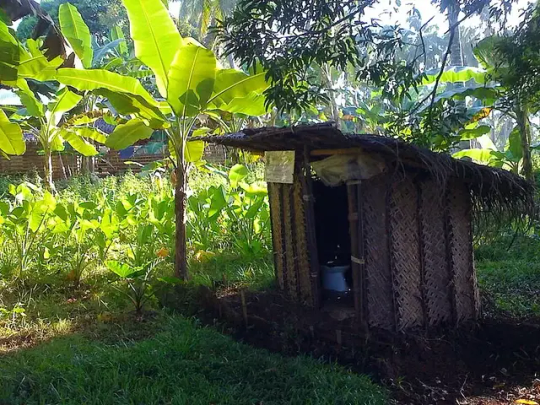
CAGAYAN DE ORO CITY - The National Irrigation Administration in Northern Mindanao (NIA-10) has taken a significant step towards sustainable farming by adopting "green technology" in four areas of the region.
The initiative aims to support farmers and enhance their productivity.
Solar Pumps Installed: Saving Costs for Rice Farmers
In an interview on Thursday, NIA-10 Manager Elpidio Lucernas Jr. revealed that solar pumps have been installed this year in the towns of Balingasag and Alubijid, both located in Misamis Oriental, as well as in Lala town in Lanao del Norte and Barangay Pagalungan in Cagayan de Oro City.
These solar pumps offer a major advantage to rice farmers in these areas, as they can now save at least 50 percent on their electricity bills compared to their previous billing statements from electric providers.
Additional Irrigation Projects Set for Implementation
Lucernas, who manages the Irrigation Management Office of the four provinces in Region 10, excluding Bukidnon, also announced that additional irrigation projects worth PHP20 million are scheduled for implementation before the end of this year.
These projects will be carried out in the towns of Balingasag and Maranding in Lanao del Norte and Tangub City in Misamis Occidental. The aim is to further enhance irrigation facilities in these areas, providing vital support to local farmers.
Challenges in Misamis Oriental: Insufficient Irrigation Coverage
While highlighting the progress made, Lucernas emphasized that NIA-10 is committed to improving its service area in Misamis Oriental.
Currently, only 18.3 percent of the land in the region is irrigated, falling short of the necessary coverage for achieving rice sufficiency and providing cheaper rice prices.
Expanding Irrigation Coverage: A Critical Step
Lucernas explained that the current irrigation rate covers approximately 2,114 hectares of farmland out of the 5,000-hectare service area, resulting in a yield of only 3,910 kilograms per hectare.
To achieve rice sufficiency in Misamis Oriental, it is crucial to expand the irrigated land area. However, the process of irrigation development is still underway.
Project Implementation Speeds Up
To address these challenges, NIA-10 is expediting its project implementation, which has already reached 90 percent completion for cycle 2022.
This proactive approach will help accelerate the region's progress towards achieving a more efficient and sustainable irrigation system.
Promoting a Sustainable Future for Northern Mindanao
As NIA-10 continues to prioritize the adoption of green technology and expand its irrigation projects, the prospects for enhanced farming productivity and improved rice sufficiency in Northern Mindanao are expected to grow.
The sustainable initiatives undertaken by NIA-10 are not only crucial for the region's agricultural sector but also for promoting a greener and more environmentally conscious future.
Sources: THX News & Philippine News Agency.
Read the full article
#CagayandeOroCity#cost-savingforricefarmers#Greentechnology#Improvingfarmingproductivity#Irrigationprojects#LanaodelNorte#MisamisOriental#NationalIrrigationAdministration#NorthernMindanao#Solarpumps#sustainableagriculture#sustainablefarming
2 notes
·
View notes
Text
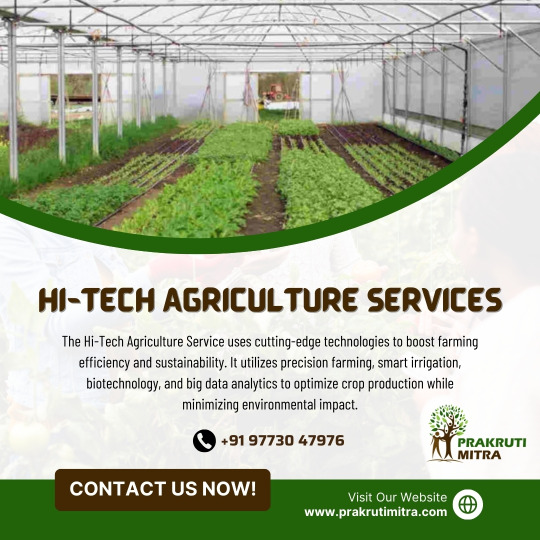
Hi-Tech Agriculture Services
The Hi-Tech Agriculture Service uses cutting-edge technologies to boost farming efficiency and sustainability. It utilizes precision farming, smart irrigation, biotechnology, and big data analytics to optimize crop production while minimizing environmental impact.
For more information: https://bit.ly/3UAf2yY
#HiTechAgriculture#FarmingInnovation#SmartFarming#PrecisionAg#AgTech#SustainableAgriculture#TechFarm#FutureOfFarming#AgInnovation#DigitalAg#VerticalFarming#SmartIrrigation#BiotechAg
0 notes
Text
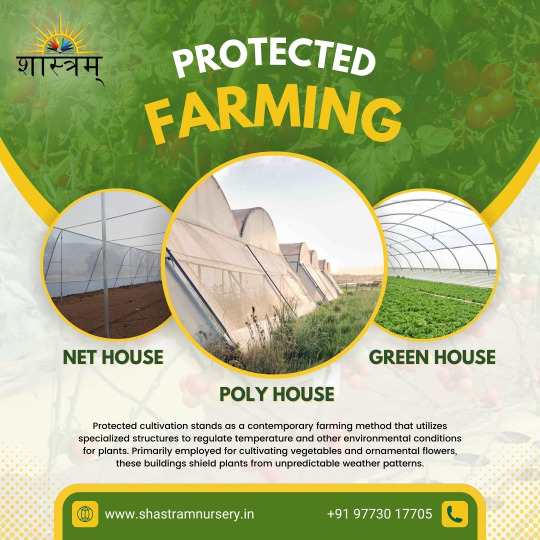
Protected Farming: Nethouse / Polyhuose / Greenhouse
Protected cultivation is a modern agricultural technique leveraging specialized structures to manage temperature and environmental factors for optimal plant growth. Predominantly utilized for growing vegetables and decorative blooms, these facilities provide a shield against unpredictable weather, ensuring consistent and favorable conditions for crops.
For More Information contact us: +91 97730 17705
Visit: https://bit.ly/3JFhbmQ
#protectedcultivation#modernfarming#greenhousegrowing#optimalconditions#cropprotection#specializedstructures#agriculturaliInnovation#climatecontrolledfarming#stableenvironment#sustainableagriculture#shastramnursery#shastram#nethouse#polyhouse#greenhouse#agriculture#farming#organicfarming#Protectedfarming#nethousefarming#foodprocessing#organicfood
0 notes
Text
Agricultural Biologicals Market Outlook Report 2024-2030: Trends, Strategic Insights, and Growth Opportunities | GQ Research
The Agricultural Biologicals market is set to witness remarkable growth, as indicated by recent market analysis conducted by GQ Research. In 2023, the global Agricultural Biologicals market showcased a significant presence, boasting a valuation of US$ 14.6 billion. This underscores the substantial demand for Agricultural Biologicals technology and its widespread adoption across various industries.
Get Sample of this Report at: https://gqresearch.com/request-sample/global-agricultural-biologicals-market/
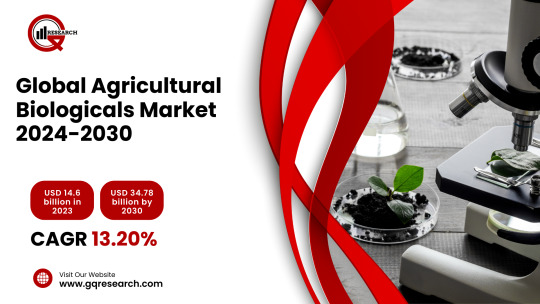
Projected Growth: Projections suggest that the Agricultural Biologicals market will continue its upward trajectory, with a projected value of US$ 34.78 billion by 2030. This growth is expected to be driven by technological advancements, increasing consumer demand, and expanding application areas.
Compound Annual Growth Rate (CAGR): The forecast period anticipates a Compound Annual Growth Rate (CAGR) of 13.20%, reflecting a steady and robust growth rate for the Agricultural Biologicals market over the coming years.
Technology Adoption:
In the Agricultural Biologicals market, technology adoption focuses on enhancing the efficacy and sustainability of biological products for crop protection and enhancement. Advanced biotechnology methods such as genetic engineering, fermentation, and microbial screening are employed to develop novel biologicals, including biopesticides, biofertilizers, and biostimulants. Furthermore, formulation technologies such as encapsulation and microencapsulation improve the stability and shelf-life of biologicals, ensuring optimal performance in various agricultural conditions. Additionally, precision agriculture technologies, including drones and satellite imaging, facilitate targeted application of agricultural biologicals, minimizing waste and maximizing efficacy.
Application Diversity:
The Agricultural Biologicals market serves diverse applications across different segments of agriculture, including crop protection, soil health management, and crop nutrition. Biological products are used to control pests, diseases, and weeds while promoting plant growth, soil fertility, and stress tolerance. Biopesticides target specific pests with minimal impact on non-target organisms, offering environmentally friendly alternatives to chemical pesticides. Biofertilizers enhance nutrient uptake and soil microbial activity, improving crop productivity and sustainability. Biostimulants stimulate plant growth and resilience, enhancing yield and quality in various crops and cropping systems.
Consumer Preferences:
Consumer preferences in the Agricultural Biologicals market are influenced by factors such as product efficacy, safety, environmental impact, and regulatory compliance. Growers prioritize biological products that demonstrate high efficacy in pest and disease control while minimizing risks to human health and the environment. Additionally, consumer preferences favor biologicals that are compatible with integrated pest management (IPM) practices, promoting sustainable agricultural systems. Moreover, ease of application, compatibility with existing farming practices, and cost-effectiveness are important considerations for growers when choosing agricultural biologicals.
Technological Advancements:
Technological advancements in the Agricultural Biologicals market focus on improving product efficacy, formulation stability, and application precision. Research efforts aim to identify and characterize novel microbial strains and natural compounds with potent bioactivity against target pests and pathogens. Moreover, advancements in formulation technologies, such as nanoemulsions and biopolymer coatings, enhance the stability and delivery efficiency of biologicals under varying environmental conditions. Additionally, developments in biotechnology enable the engineering of microbial consortia with synergistic effects for enhanced plant growth promotion and disease suppression. Furthermore, digital agriculture technologies enable real-time monitoring and decision-making for optimized application of agricultural biologicals, improving resource efficiency and crop performance.
Market Competition:
The Agricultural Biologicals market is characterized by intense competition among multinational corporations, biotechnology firms, and startup companies, driven by factors such as product innovation, brand reputation, distribution network, and regulatory compliance. Major players leverage their research and development capabilities and global market presence to introduce new biological products and expand market share. Meanwhile, startups and smaller firms focus on niche markets and innovative technologies to differentiate themselves and gain market traction. Additionally, strategic partnerships, collaborations, and acquisitions are common strategies for companies to strengthen their product portfolios and competitive positions in the market.
Environmental Considerations:
Environmental considerations are central to the Agricultural Biologicals market, with stakeholders prioritizing sustainable agriculture practices and reduced environmental impact. Biological products offer environmentally friendly alternatives to chemical pesticides and fertilizers, minimizing risks to biodiversity, soil health, and water quality. Moreover, the use of biologicals promotes soil conservation, beneficial insect populations, and ecosystem resilience, contributing to overall agricultural sustainability. Additionally, efforts are made to ensure the safety and biodegradability of agricultural biologicals, as well as compliance with regulatory requirements for environmental protection. Overall, the adoption of agricultural biologicals supports the transition towards more sustainable and ecologically sound farming practices.
Regional Dynamics: Different regions may exhibit varying growth rates and adoption patterns influenced by factors such as consumer preferences, technological infrastructure and regulatory frameworks.
Key players in the industry include:
Bayer CropScience
BASF SE
Syngenta
Marrone Bio Innovations
Certis USA
Valent BioSciences
Koppert Biological Systems
Isagro S.p.A.
Novozymes
Lallemand Inc.
Rizobacter
Symborg
The research report provides a comprehensive analysis of the Agricultural Biologicals market, offering insights into current trends, market dynamics and future prospects. It explores key factors driving growth, challenges faced by the industry, and potential opportunities for market players.
For more information and to access a complimentary sample report, visit Link to Sample Report: https://gqresearch.com/request-sample/global-agricultural-biologicals-market/
About GQ Research:
GQ Research is a company that is creating cutting edge, futuristic and informative reports in many different areas. Some of the most common areas where we generate reports are industry reports, country reports, company reports and everything in between.
Contact:
Jessica Joyal
+1 (614) 602 2897 | +919284395731
Website - https://gqresearch.com/
0 notes
Video
youtube
The Future of Agriculture: Vertical Farming Revolution
Vertical farming is not just a trend; it's a sustainable solution to feed our growing population while minimizing environmental impact. From urban skyscrapers to repurposed warehouses, vertical farms are popping up in diverse locations, revolutionizing food production.
Join us as we dive into the latest innovations driving the vertical farming market forward. Learn about state-of-the-art technologies such as hydroponics, aeroponics, and vertical stacking systems, enabling efficient cultivation of a wide range of crops year-round.
Discover how vertical farming addresses key challenges faced by traditional agriculture, including land scarcity, water usage, and climate change. Through controlled environments and precision agriculture techniques, vertical farms optimize resource utilization while maximizing yields.
Whether you're a farmer, entrepreneur, or simply curious about the future of food, this video is for you. Join the vertical farming revolution and witness the dawn of a new era in agriculture.
Don't forget to like, share, and subscribe for more exciting content on sustainable farming practices and innovative agricultural technologies!
#youtube#VerticalFarming#SustainableAgriculture#FutureOfFood#PrecisionAgriculture#FoodSecurity#SmartFarming
0 notes
Text

Best Nanobubbles Dissolved Oxygen Water | Enrichment Systems
Enrichment Systems is one of the most useful dissolved oxygen water when showing oxygen molecules dissolved in water. Aquatic life must sustain fish and other creatures. It supports fish and other aquatic life and is vital to it. Lake, river, and ocean ecosystems are kept in good condition by keeping an eye on the amounts of dissolved oxygen.
#Dissolvedoxygen#NanobubblesdissolvedOxygen#Sustainableagriculture#Irrigationdissolvedoxygen#DissolvedOxygenwater
1 note
·
View note
Text
Cultivating a Brand Identity for Your Organic Vegetables Farming Plan
In today's competitive market, establishing a strong brand identity is crucial for the success of any business, especially in the realm of organic vegetable farming. With consumers becoming increasingly health-conscious and environmentally aware, there's a growing demand for organic produce. However, simply growing Best Organic Vegetables Farming Plan is not enough to stand out in the market. To truly thrive, you need to cultivate a distinct brand identity that resonates with your target audience. In this blog post, we'll explore the importance of branding for organic vegetable farms and provide actionable tips to help you craft a compelling brand identity for your farm.
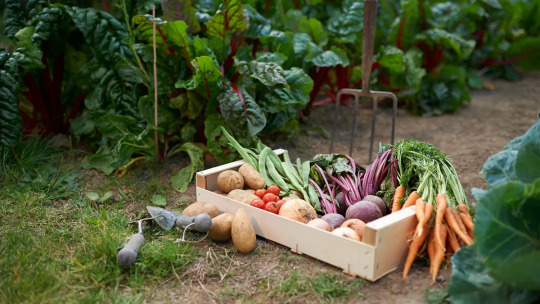
Understanding the Importance of Brand Identity
Your brand identity is more than just a logo or a catchy slogan. It encompasses the values, personality, and unique selling proposition of your farm. In the crowded organic produce market, a strong brand identity helps you differentiate yourself from competitors and build trust with consumers. It allows you to communicate your commitment to sustainability, quality, and health in a way that resonates with your target audience.
Defining Your Brand Identity
The first step in cultivating a brand identity for your organic vegetable farm is to define what sets you apart. Start by identifying your farm's mission, values, and goals. What inspired you to start this farm? What principles do you uphold in your farming practices? Understanding your farm's unique story and philosophy will serve as the foundation for your brand identity.
Next, consider your target audience. Who are the consumers that you want to attract? What are their values, preferences, and pain points? Tailor your brand identity to resonate with this audience, addressing their needs and aspirations through your messaging and visuals.
Crafting Compelling Visuals and Messaging
Visuals play a crucial role in branding, as they are often the first impression consumers have of your farm. Invest in professional logo design and branding materials that reflect the essence of your farm. Use colors, fonts, and imagery that convey the natural, wholesome qualities of Best Organic Vegetables Farming Plan.
In addition to visuals, your messaging should also reinforce your brand identity. Develop a clear and compelling brand story that highlights your farm's unique journey, values, and commitment to sustainability. Incorporate this story into your website, social media posts, packaging, and marketing materials to create a consistent brand experience across all touchpoints.
Building Relationships with Customers
Building a strong brand identity is not just about aesthetics; it's also about fostering meaningful connections with your customers. Engage with your audience on social media, respond to their inquiries and feedback, and share behind-the-scenes glimpses of life on the farm. By humanizing your brand and building rapport with consumers, you can cultivate loyalty and advocacy that goes beyond the quality of your produce.
Cultivate Your Brand Identity with Kavya Organic Farm
In conclusion, cultivating a strong brand identity is essential for the success of your organic vegetable farming plan. By defining your values, crafting compelling visuals and messaging, and building relationships with customers, you can differentiate your farm in the competitive market landscape. At Kavya Organic Farm, we understand the importance of branding, and we're committed to helping you grow your farm's identity. Contact us today to learn more about our organic farming solutions and how we can help you establish a thriving brand presence online and offline. With Kavya Organic Farm, you can cultivate a brand identity that resonates with consumers and ranks high on Google for organic vegetable farming.
0 notes
Text

Unveiling the Future of Agriculture: Protected Farming Revolutionizes Cultivation
Explore the transformative potential of protected farming for sustainable agriculture. Discover how protected cultivation structures are reshaping farming practices.
Contact us at +91 78743 79887, +91 75677 79887, or
visit: https://bit.ly/4deJyWC
#ProtectedFarming#SustainableAgriculture#FutureOfFarming#GreenhouseRevolution#ClimateSmartFarming#AgTech#EfficientFarming#OrganicFarming#Agribusiness#AgriStartups
0 notes
Text
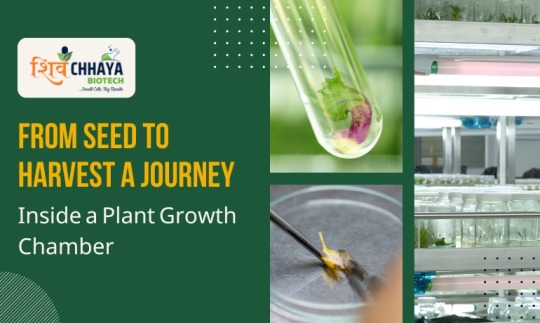
From Seed to Harvest: A Journey Inside a Plant Growth Chamber
Discover the intricate journey of plant growth within controlled environments. Join us as we delve into the fascinating world of plant growth chambers, nurturing seeds to bountiful harvests.
For more information visit: https://bit.ly/4cSc2oK
Contact us on: +91 77790 21916
#PlantGrowthChamber#IndoorFarming#CropProduction#AgriculturalTechnology#ClimateControlledFarming#HarvestingJourney#AgInnovation#CropScience#SustainableAgriculture#FarmToTable
0 notes
Text

Protected Cultivation
Explore the future of farming with Nethouses, Polyhouses, and Greenhouses! These advanced structures protect crops from bad weather and pests, helping them grow better. Let's say goodbye to old farming problems and hello to easier, more sustainable farming.
For more information visit: https://bit.ly/3Tu2s3H
#GreenHouse#NetHouse#ProtectedFarming#ProtectedCultivation#GreenhouseFarming#ClimateControlledFarming#IndoorFarming#ControlledEnvironmentAgriculture#HighTechFarming#CropProtection#SustainableAgriculture#InnovativeFarming
0 notes
Text
Aradhaya Food Recycle - Pioneers in Cattle Feed Manufacturing

Introduction to Aradhaya Food Recycle
Aradhaya Food Recycle is a trailblazer in the field of cattle feed manufacturing. Established with the vision of promoting sustainable agriculture practices, this company has quickly risen to prominence for its dedication to quality, innovation, and environmental responsibility.
The Philosophy Behind Aradhaya Food Recycle
At the heart of Aradhaya Food Recycle’s ethos lies a deep-seated commitment to sustainability. The company believes in utilizing resources efficiently while minimizing waste. By repurposing organic materials into high-quality cattle feed manufacturing, Aradhaya Food Recycle not only reduces environmental impact but also contributes to the circular economy.
Innovative Manufacturing Process
What sets Aradhaya Food Recycle apart is its innovative manufacturing process. Unlike traditional methods that rely heavily on synthetic additives and preservatives, Aradhaya Food Recycle harnesses the power of natural ingredients to create nutritious and wholesome cattle feed. By carefully selecting and processing organic materials, the company ensures that its products are free from harmful chemicals and additives.
Quality Assurance
Aradhaya Food Recycle places utmost importance on quality assurance. Every batch of cattle feed undergoes rigorous testing to ensure compliance with the highest industry standards. From sourcing raw materials to the final packaging, the company maintains strict quality control measures to guarantee the safety and efficacy of its products.
Environmental Impact
One of the most significant contributions of Aradhaya Food Recycle is its positive impact on the environment. By diverting organic waste from landfills and repurposing it into valuable cattle feed manufacturing, the company helps reduce greenhouse gas emissions and alleviate pressure on natural resources. Additionally, the use of sustainable farming practices promotes biodiversity and soil health, further enhancing the ecological footprint of agriculture.
Community Engagement
Aradhaya Food Recycle is deeply invested in community engagement and empowerment. The company actively collaborates with local farmers and agricultural cooperatives to promote sustainable farming practices and improve livelihoods. Through training programs and knowledge sharing initiatives, Aradhaya Food Recycle empowers farmers to adopt eco-friendly techniques that enhance productivity and profitability.
Looking Towards the Future
As the demand for sustainable agricultural solutions continues to rise, Aradhaya Food Recycle remains at the forefront of innovation. The company is committed to ongoing research and development, exploring new avenues to optimize its manufacturing processes and expand its product offerings. With a focus on sustainability, quality, and community impact, Aradhaya Food Recycle is poised to shape the future of agriculture for generations to come.
Conclusion
In a world where environmental sustainability is paramount, Aradhaya Food Recycle stands as a beacon of hope. Through its pioneering efforts in cattle feed manufacturing, the company not only supports the agricultural industry but also fosters a healthier planet for future generations. With its unwavering commitment to sustainability and innovation, Aradhaya Food Recycle is truly revolutionizing agriculture, one feed at a time.
#SustainableAgriculture#CattleFeed#EnvironmentalResponsibility#FarmersEmpowerment#CircularEconomy#InnovationInFarming#QualityFeed#CommunityEngagement#GreenRevolution#FutureOfAgriculture
1 note
·
View note
Text
Agriculture's Future Debated in Rabat: ARC33 Opens Soon

As the world’s eyes turn to Rabat, the capital of the Kingdom of Morocco, a groundbreaking event unfolds that seeks to chart a new course for Africa’s agrifood systems.
The FAO’s 33rd Regional Conference for Africa (ARC33), happening 18-20 April, represents a critical confluence of ideas, innovations, and discussions aimed at transforming agriculture into a more efficient, inclusive, and sustainable sector.
The Urgency of Now
Challenges at the Forefront
In the wake of growing hunger across Africa, exacerbated by conflicts, economic downturns, and the harsh realities of the climate crisis, ARC33’s agenda could not be more timely.
The event stands as a beacon of hope and a call to action to address the pressing needs of a burgeoning population, aiming to end hunger and malnutrition through transformative change.
A Collaborative Effort
Bringing together agriculture ministers, government officials, civil society groups, and representatives from the private sector, ARC33 is a melting pot of perspectives.
Each delegate arrives with unique experiences, ready to forge regional recommendations that will influence global agrifood policy and practice.
Voices for Change
Distinguished Speakers and Visionaries
The conference boasts an impressive lineup of speakers, including H.E. Aziz Akhannouch, Qu Dongyu, and representatives from the African Union and various nations.
Their insights will kick off a series of ministerial roundtables focusing on the FAO’s Four Betters: better production, better nutrition, a better environment, and a better life for all.
Critical Discussions and Roundtables
From investing in resilience to exploring the Blue Transformation in Africa, each session is designed to tackle key drivers of agrifood system transformation.
Special events will delve into digitalization, women and youth in agriculture, and strategies for financing resilient agrifood systems.
A Unified Vision for the Future
Toward a Ministerial Declaration
As ARC33 concludes, a Ministerial Declaration will encapsulate the collective vision and commitments made, setting a course toward a transformed agrifood landscape in Africa.
This document will serve as a guiding light for future actions, embodying the conference’s spirit of collaboration and innovation.
Sources: THX News & UN Food and Agriculture Organization.
Read the full article
#AfricaFoodSecurity#AgricultureTransformation#AgrifoodSystemsAfrica#ARC33#ClimateCrisisAgriculture#FAORegionalConference#InclusiveAgrifoodDevelopment#RabatAgricultureConference#ResilientAgrifoodSystems#sustainableagriculture
0 notes
Text
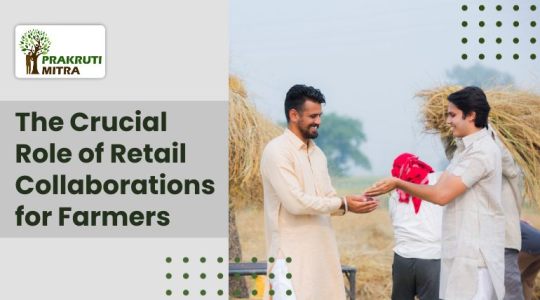
The Crucial Role of Retail Collaborations for Farmers
Farmers rely on retail collaborations to access wider markets, boost visibility, and ensure steady income. These partnerships enforce quality standards, diversify sales, and offer feedback for improvement, fostering long-term relationships that benefit both farmers and retailers while supporting sustainable agriculture and local economies.
For more information: https://bit.ly/49EbOi9
#FarmersRetailCollab#MarketAccess#SustainableFarming#RetailPartnerships#SupportLocalFarmers#QualityProduce#MarketVisibility#StableIncome#FeedbackLoop#EconomicGrowth#SustainableAgriculture
0 notes
Text
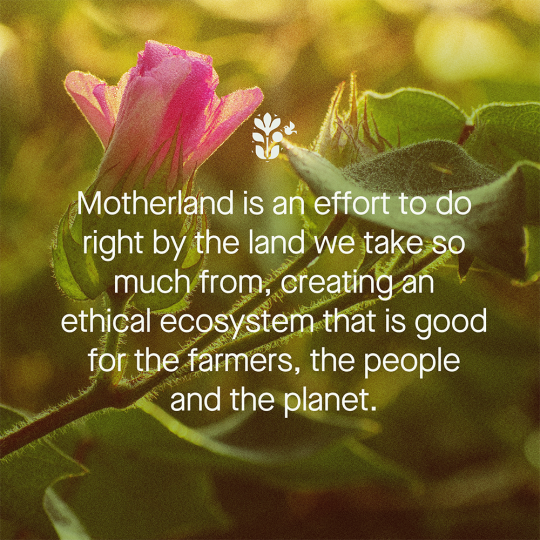
Motherland is all about doing right by the land we rely on, creating a system that's fair for farmers, people, and the planet. We're a small business aiming to make a big difference. The road ahead is tough, but we're taking it step by step, just like a slow-cooked curry. Our focus is on purpose, not just profit. With our values as our guide, we're seeking guidance that fits with nature's wisdom.
#sustainableagriculture#sustainableliving#farmtotable#pantryessential#sustainablysourced#purposeoverprofit#plasticfreepackaging#plasticfreeplanet#spices#lentils#beans#millets#indianfood#asianfood#mediterraneanfood
0 notes
Text
Matt Barnard: Reimagining and Redefining Cleaner Futures with Indoor Vertical Farming Solutions
Have you ever come across fruits and vegetables that look so delicious and you purchase them, but end up realizing that the looks were far from the taste and quality? Well, you’re not alone. Adulterated, genetically modified, pesticide foods that are grown in dirty and unclean soil and environments tend to lose their taste and quality. They are then injected with chemicals to increase their physical appearances to fool customers into making the purchase. Unclean food or food that is grown in dirty and unhygienic environments can be quite detrimental to the health of its consumers. Therefore a safer approach is sustainable food production and consumption, and organic farming which is healthier, preserves the environment, reduces pollution, is free from adulterants and pesticides, and reduces excess water usage.

Clean food solutions that are followed consistently aid in improving overall health, preserving and conserving the ecosystem and biodiversity, reducing the use of excess water, reducing the endangerment and extinction of species, efficiently improving the use of natural and renewable resources, reducing greenhouse gas emissions, reducing adverse climatic changes and global warming. The practices in sustainable agriculture by our farmers, agronomists, scientists, and start-up businesses play an enormous role in fostering and establishing urban farming innovations. One such example is Indoor Vertical Farming.
Indoor Vertical Farming Solutions are farming solutions that grow and cultivate crops and diverse food products in a specifically interior-controlled microclimate space that is vertically stacked one upon the other. Wherein this practice is also referred to as – CEA (Controlled-Environment Agriculture), these solutions are a modern and sustainable way of growing and cultivating food ingredients and products alongside advanced technological tools and resources. This reduces the extent of environmental pollution and damage and improves the quality and yield of the crops grown and harvested. Through indoor vertical farming, the food crops are grown in spaces with controllable settings and features such as temperature, lighting, water, and more, in an optimized, clean, and safe environment.
Therefore in this article, we will be covering the entrepreneurial and inspiring idea and passion for sustainably growing and living by co-founder Matt Barnard’s Indoor Vertical Farming company – Plenty, which is on a mission to – “bring the freshest, cleanest, most crave-able produce to people everywhere”.
For more interesting insights, visit The Business Magnate.
Matt Barnard – Co-Founder and CEO:
The Co-founder and Chief Executive Officer at Plenty is Matt Barnard. With a driving passion to work towards building and connecting with the world through innovative, creative, and agricultural sustainability initiatives, Matt aimed to – “bring healthy food to the world while protecting the environment”. The co-founder has a formal education of a Bachelor of Arts in Economics at Northwestern University and a Master of Science Degree in Management at Stanford University Graduate School of Business. Matt started his career back in 1995 and has since then worked in many diverse roles and positions that have gained his skill, experience, knowledge, and awareness about the people and the world.
As Nate Story – Co-founder and Chief Science Officer at Plenty says – “I felt that technology could help feed a lot of people, extend lives, fight environmental destabilization, and give the land back to the natural landscape”.
“Plenty believes that food justice is social justice.” – Plenty.
Matt Barnard, Nate Story, and two other co-founders got together with the same passion to drive change, transform, reimagine, and redefine cleaner and safer futures, that integrate technology and science by a highly qualified team of growers, engineers, artists, foodies, plant scientists, and agronomists. This is how their Indoor Vertical Farming solutions company came to life.
PLENTY:
Co-founders – Matt Barnard, Nate Story, Jack Oslan, and Nate Mazonson, together founded – Plenty, a food and beverage company on a mission to feed the world in a sustainable way and approach. The company encourages its workforce and team to inculcate core values of – Finding a Way, Being Down to Earth, and Growing Together. Although founded in the year 2013, Plenty was launched in the year 2014 in the South of San Francisco, USA, establishing and implementing the future of agriculture.
At Plenty, we’re reimagining what a farm can be.”
Plenty is a company that grows and harvests its food products indoors in vertical farming agriculture, cultivation, and sustainable strategies. Matt Barnard – the CEO of Plenty, built the company alongside his co-founding partners with the vision to grow and deliver pesticide-free, GMO-free, organic, fresh, hand-picked food ingredients that provide all the nutrients and minerals that an individual may need from that particular food product. The use of advanced technological tools and resources cut down the physical need for a labor workforce, enhancing and speeding up operations seamlessly. Crispy Lettuce, Baby Kale, Baby Arugula, and Spring Mix are the current ingredients in business. In this year 2024, Plenty is soon to release its fresh and farm-growing Strawberries year-round in Virginia, USA, and is working towards adding more food ingredients to its list.
The vision and mission behind Plenty’s indoor vertical farming was to address the challenges brought about by a series of events that have been taking place all over the world. Overpopulation gives rise to a rapid decrease in the availability of cultivable land space, decreasing the quantity and quality of the food grown. This threatens the availability of food for the people and therefore Plenty acts as a solution and a place where people can trust that the food that they consume comes from, is safe, consistent, and healthy. Less land area used, reduced water usage, and healthy food grown are the number one priority to happy smiles and healthy lives.
Visit More : https://thebusinessmagnate.com/matt-barnard-reimagining-and-redefining-cleaner-futures-with-indoor-vertical-farming-solutions/
0 notes